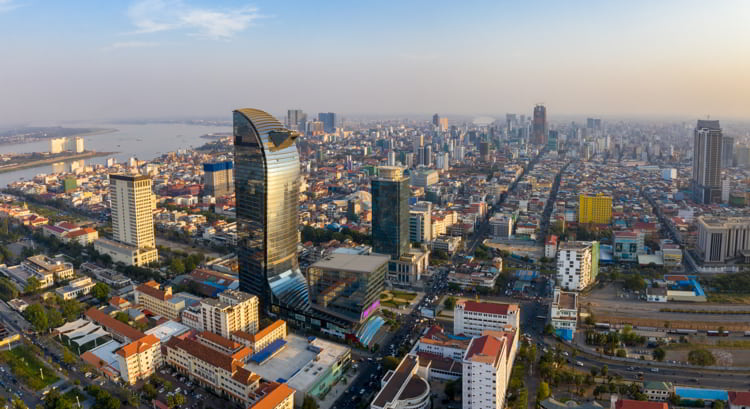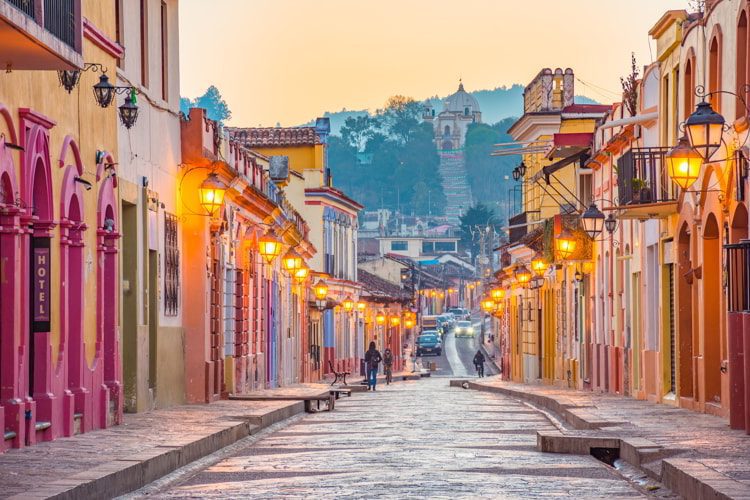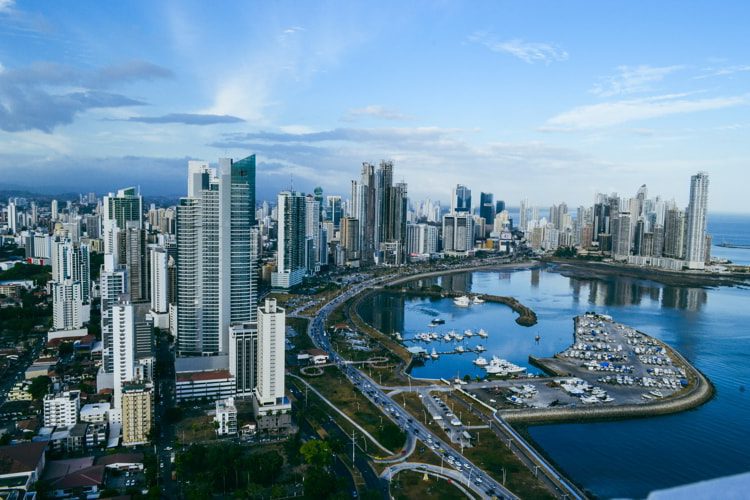If you are thinking of working overseas, we have created a list of the easiest countries to get a work visa.
Getting a work visa can be a painful and convoluted experience, as most countries prioritize their own citizens and place limits on the roles available to foreigners.
You have options though…
If you have training in the field of any STEM (Science, Technology, Engineering, and Mathematics) subjects, you’ll likely have an easier time finding a job and obtaining your work visa.
Another option is to teach English. A TEFL certification isn’t always a prerequisite, but if you have one you will most likely get a better salary. Most countries around the globe will accept a TEFL certification for you to apply for a work visa.
You could also create work for native local citizens by starting your own business. These often come with the added benefit of significant tax breaks.
There are two types of work permit. The first will allow you to work at a specified company doing a job already proven cannot be done by a native citizen. If you can find a company to sponsor you, this is the way to go. The second is an open work permit that will allow you to do any job within the country. Generally speaking, you will need to marry a citizen or have already completed a lengthy residency to obtain this visa.
Read on to discover the easiest countries to get a work visa.
Options For Young Adults
If you are 18 to 35, you can apply for a working holiday visa which can be completed online via the immigration service. There is no need to engage the services of a lawyer or visa agency… saving you a lot of money. There are nearly 60 countries that will offer you this visa. This usually allows you to work for up to 12 months, with only a few restrictions attached in some countries such as proof of funds and medical insurance.
Most seek the services of a specialist to help them with their visa application. Online companies such as Visa First can assist you in various countries. The alternative is to employ a lawyer from the country you are intending to move to. The process can be confusing and sometimes counterintuitive, so it is often worth paying for expert advice. Of course, if you can find a company who will complete the forms for you, that is the best option.
1. Getting A Work Visa In Australia

For a long time, one of the easiest countries to get a work visa was Australia. Those days are not entirely over, but it has become more difficult. People under the age of 30 from most European countries can apply for a visa via the Working Holiday Maker Program, allowing them to work in Australia during their holiday.
Everyone else needs to apply for a Temporary Skilled Shortage (482) visa. Employers can sponsor an employee for a maximum of four years. This visa allows you to bring immediate family members and to come and go from Australia as frequently as you like. As a general rule, a clean criminal record is necessary. However, depending on the circumstances, you may be exempt. You need to be a fluent English speaker and have all the necessary qualifications for the post you are taking.
2. How Can I Get A Work Visa In New Zealand?

New Zealand has a range of jobs on its Long-Term Skill Shortage List. If you find a job on the Shortage List paying more than NZ$45,000 per year, you can find sponsored work.
For a faster application process, apply for an Immediate Skill Shortage job. There are fewer options, but your application will be fast-tracked. You could find yourself working in under six months.
To work in New Zealand, you will need an IRD (Inland Revenue) number that allows you to pay tax.
Those who like the great outdoors can take advantage of New Zealand’s spectacular scenery. Jobs are available working as a ski or snowboard instructor. Just as rewarding are a range of farming jobs which come up yearly in New Zealand.
3. Getting A Work Visa In Cambodia

Cambodia is best known as a retirement destination with employment and business opportunities available. It’s one of the easiest countries to get a work visa in the world though.
There are two types of work permits available—temporary and permanent. Unless you have friends in the Cambodian government, or extremely deep pockets, you will be getting a temporary work permit. It costs about US$100 and you’ll need to provide your general information. You will also need to send a copy of your employment letter to the Ministry of Interior.
There are some charity and UN jobs available in Cambodia, but lots of expats find work through the expat community. Teaching English is a popular calling here with jobs available in the public and private sector. Foreigners can also set up a business, although the process is slightly harder than in neighboring countries.
4. Tech Work Opportunities In Ireland

Adobe Stock/Madrugada Verde
Ireland has a General Employment Permit, which grants non-EU citizens up to two years of legal employment. She also has the Critical Skills Employment Permit, in which you need to fall into the category of the professions specified.
If you search on the Ireland work visa website, you will be able to find all the sectors they are hiring for under these two categories. Once you have a job offer in writing, either you or your employer can apply for your visa. There are a few minimum requirements, but Ireland remains one of the easiest countries to get a work visa today.
Start Your New Life Today, Overseas
5. Getting A Work Visa In Singapore

Two common work visas are the Singapore EP Pass (Singapore Employment Pass) and the Singapore E Pass (Singapore Entrepreneur Pass). The former is most suited to skilled professionals, while the latter is aimed at entrepreneurs. Both allow you to work in Singapore for 12 months. The pass is valid for up to two years and can be renewed.
Singapore is a thriving business center, but you will need to have at least S$50,000 to set up a company.
There are opportunities for mildly skilled workers known as the S Pass. Workers, such as technicians, can work here with an S Pass. They need to prove the relevant qualifications and a minimum salary of S$2,200 per month.
Workers in Singapore can bring their spouses and other dependents.
6. Teaching Opportunities In China

The easiest way to get a work visa in China is by teaching English. The rapidly growing middle class is behind this boom. They see English as indispensable for their children’s future, creating a big demand for lessons. You will need a certificate degree, a police background check, and a TEFL certificate. There is a US$50 administrative fee.
You can apply for the teaching visa, known as a “Z” Visa, through a China Embassy or Consulate. This requires sponsorship from your future employers. Do not risk working in China without the required visa as you can be hit with a large fine, deportation, or even jail time.
You can also apply for the China Talent Visa (R). This is for people who China considers to be highly talented. Renowned professors, scholars, and people capable of taking top jobs in Chinese corporations qualify.
7. Getting A Work Visa In Mexico

To get a visa in Mexico, you have to pass an interview at your home consulate, and the company that wishes to employ you will need to take a sponsorship letter to immigration. If the company you are working for has experience hiring foreign workers, this process should be fairly easy… if not, you might want to hire a lawyer. This will help to ensure everything goes through without problems.
You can bring your family with you (although there’s no guarantee of a work permit for your spouse) and they must register with immigration within 30 days.
Mexico is a favorable choice… there is a demand for native English speakers now that this country is working closer together with the United States.
As well as being one of the easiest countries to get a work visa, Mexico has great transport links to the States.
8. Big Corporations Are Hiring In Panama

Adobe Stock/julietaPanama has managed to attract corporations from across the world over the last decade. Many of the world’s biggest multinationals now have major offices here, leading to a huge demand for foreign workers.
If you are from one of the friendly nations, then you are eligible for a fast-tracked work permit and visa. Up until 2017, you could get the work permit without even having a job lined up. Now, you need to have a written job offer from a Panamanian company.
You can work in Panama without a work visa on one condition—that your income comes from outside Panama, making it an attractive destination for online business owners. They take advantage of the abundance of fast internet available as well as the tropical climate.
There are a range of working visas to apply for in the isthmus. If you are Italian, the Italian National Work Permit will allow you to work here for as long as you like. If your partner is Panamanian and you decide to marry, you’ll be eligible for a work visa.
The Highly Skilled Worker Permit grants workers with a bachelor or postgraduate degree the right to work in Panama. However, applying for the (sponsored) Friendly Nations Visa, is definitely the easier option. The immigration department requests detailed information about your education history. Also required is documentation from your university.
9. Getting A Work Visa In The UAE

The UAE is a long-established trading port. Investment over recent years has returned the country to a thriving center of world business. While customs dictate that doing business and working here will take some getting used to, the skills you learn will be useful in the future.
Here, the work visa process is one of the fastest in the world. It is also one of the easiest countries in the world to get a work visa. Providing you have everything in order, the full process can be completed in as little as 40 days.
Most jobs for foreigners are with “Free Zone” companies. Companies based inside a free trade zone are lightly taxed—to promote increased trade and boost the economy.
Once you have a job offer from the company, the Ministry of Labor will review it. This is to decide if the job could be carried out by a UAE citizen. Assuming you are successful, you will get a two-month visa, allowing you to start work while the work visa is finalized.
Later on, you will need to go through medical and biometric screening. After that you will sign up for medical insurance––this is mandatory in the UAE. Upon completion, you get an Emirates ID card. You can use this for everyday ID purposes, meaning you no longer need to have your passport with you at all times.









